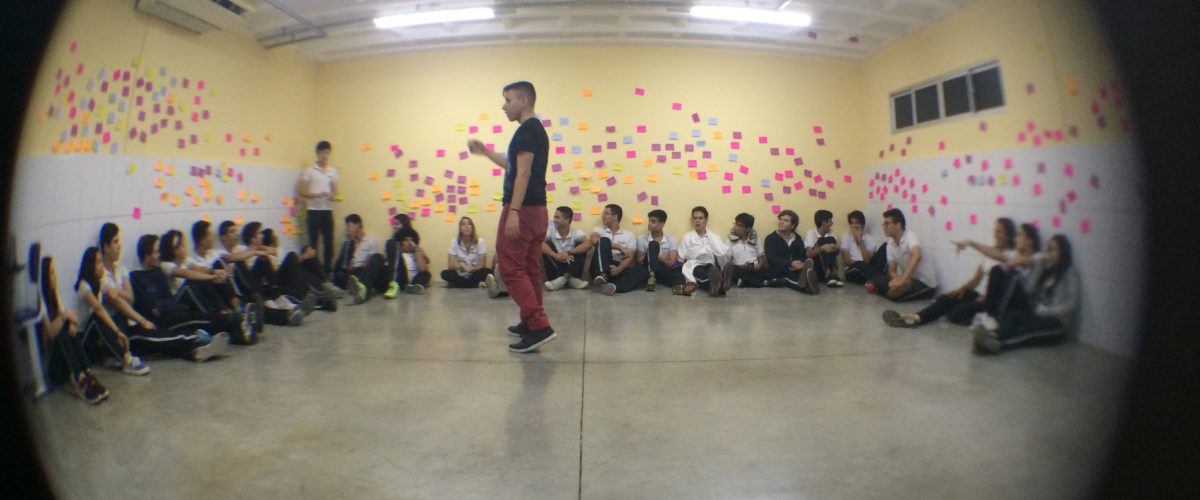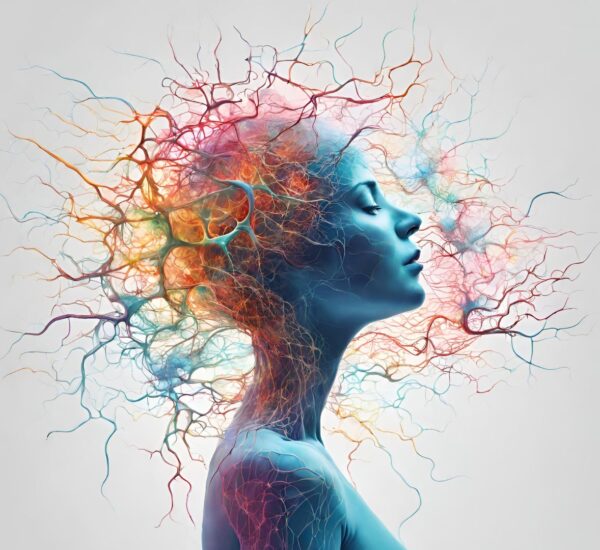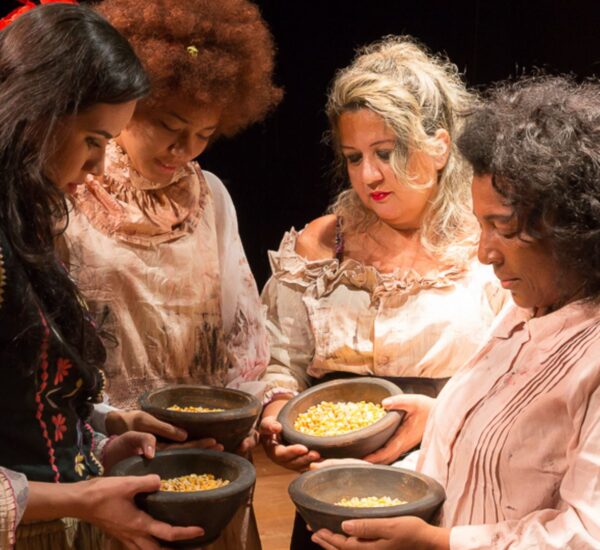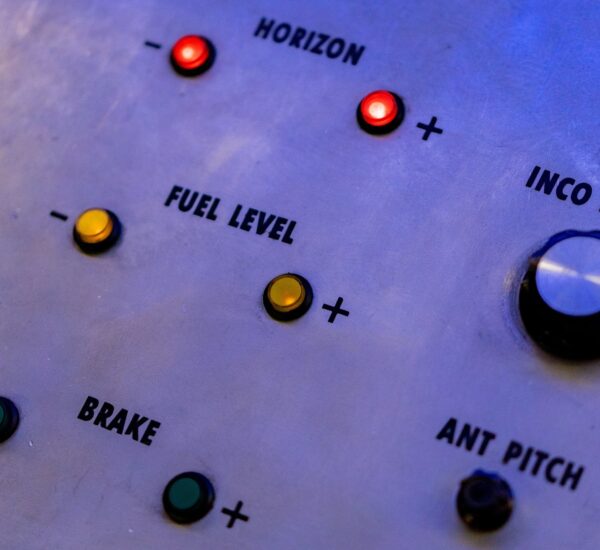How can we find better ways to cope with the world’s greatest challenges?
A journey to alternative futures, involving exploration, active learning and solutions brought along some high school kids at a brazilian’s school in the Northeast state.
A F.E.X. is an immersive experience of futures exploration that challenges its players to solve the world’s greatest challenges (and also local ones) with the takeaways and results emerging from the experience with future scenarios.
330 kids were part of the crew invited to explore the future, divided into 60 crews, sought solutions to some of humanity’s issues by exploring alternative futures and broadening awareness on tomorrow challenges.
In this journey, each participant went through 4 phases: (1) A training to get ready to go to the year 2036, (2) call-to-action to the upcoming challenges, (3) experiencing alternative scenarios in 2036 and (4) getting back to the present day (2016) with a solution.
The Future of Things, followed this whole experience, full of noteworthy discoveries and booming with creativity. We were invited to evaluate some kid’s solutions. It was amazing, the kids just nailed it.
Come with us to know a little more what happened there:
Phase 1 – The Training
The FEX team guide the kids through a evolution timeline showing the underpinnings of technological, humanity and universe origins, highlighting the main inventions and the three main revolutions to the digital era. There were also a time of reflection on exponential growth and impact of emerging technologies (Artificial Intelligence, 3D printing, Genetics, etc.).
Several cutting-edge science fiction works have been shown since the earliest Metropolis and Moon Trips to the contemporaries as Star Trek and Black Mirror showing how these sci-fi inspired and help innovators brought up with new technologies.
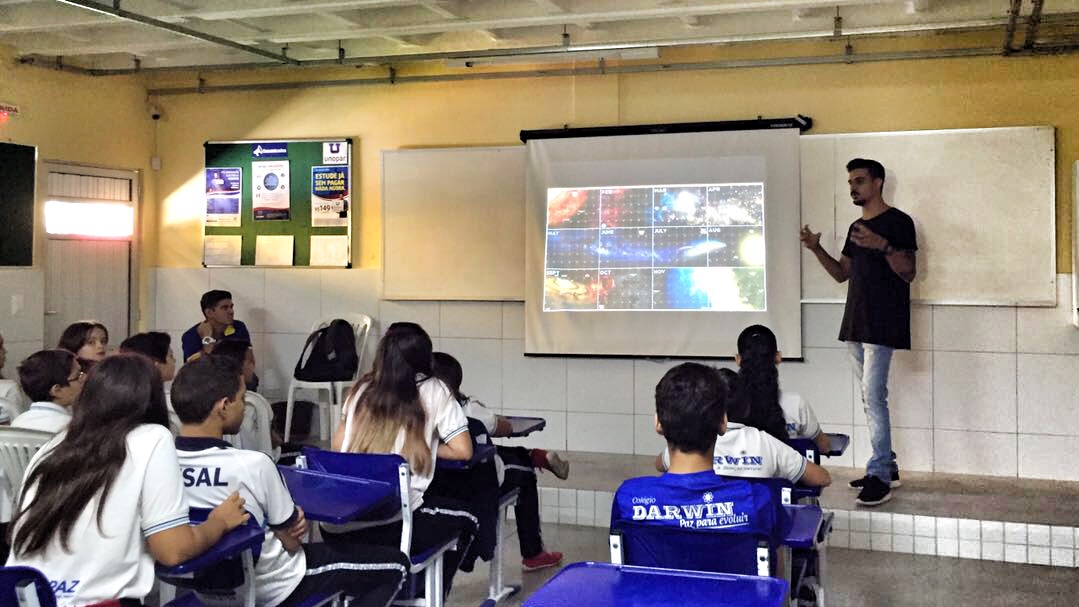
Some interesting questions rise up as:
“If 3D printing can print food, why could it not stop hunger?” (After watching a video of a restaurant where everything was printed in 3D)
“Why can not the machine have feelings, if the creator was a human?” (After seeing a scene from the movie Chappie and Her)
“What if you put two or more consciousness into a robot, instead of uploading a single one. What would it happen?” (After watching an episode of the series Black Mirror)
Yet, in this phase the kids could experience on first hand the emerging technologies like 3D printing, robotics, virtual reality, sensors and internet of things.
The greater number of kids in this journey never had touch with this kind of technology, so we could feel the immense curiosity of students during the exhibition, what most caught our attention was the reaction of the students with the virtual reality.
Phase 2 – Call-to-action
The crew was invited to a girl in a video claiming being on the future asking them to set up teams to play with throughout the journey and each team need to develop artifacts at the end of the journey.
The 6 Super Challenges:
1- Water Crisis
2- Feeding
3- Health
4- Education
5- Future of Work
6- Personal Empowerment.
These crews, bearing in mind the year 2036, should deal with these questions, taking emerging technologies and future thinking as their basis. Trying to come up with unthoughtful futures.
The solutions would be materialized through artifacts or prototypes that could be a short-film, a play, a game, a mock-up, etc.
Phase 3 – F.A.S.E (Future Alternative Simulated Environment)
The plot of this experience is about an imminent undesirable scenario envisioned 20 year from now (2036) and a crew was invited by a United Nations spin-off to figure how to solve the challenges out and avoid this from happening.
“It was envisioned a likely world collapse in the next decades, a group of people were invited to this mission to getting into F.A.S.E to find a way to avoid this potential scenario.”
In the plot, F.A.S.E is a “safe place” where players can get around to experience some possible future scenarios as well as imagine and build the future they want.
This was the most interactive part of the experience. The main challenge split up into six missions: Day in the Future, Future-Self, Deep Research, Collective Exploration, News in the Future, Expert Immediate Connection.
The first mission was a daily basis one where each team were rewarded if they post a pic showing something related to the artifact building process, it’s like day-to-day documentation of their journey.
In the second mission they got together to collectively explore the future, for starters imagining how it would be a common day in their lives in 2036.
The kids creativity and imagination on future-self were amazing. The 2036 output of envisioned scenarios show a more diversity and sensible vision of the future. (especially the future-selfs of most girls).
In the third mission they had to look for signals and evidences in the present to explore the implications and unravelling of the challenges as well as potential solutions and in the end draft a mini report.
The fourth mission was a collective forecast led by a question “How the world will be like in 2036?”, where they were challenged to come up with several hypotheses to extrapolate possible scenarios.
The fifth mission the teams were challenged to design a news story telling how the world is getting better after they got involved with the solution proposed by the explorers.
The news would need to be post on their own timeline. The goal was to share the idea with others presenting the benefit it can bring to the humanity.
In the last mission the teams had to get in touch with experts working in the area of their artifacts.The goal was to get them out of the comfort zone and show how close we are from everyone.
The kids have approached neuroscientists, psychologists, politicians, technologists, and so on. It was amazing see how far they can go when they’re engaged in the activity.
The final outcome of this phase was a future thinking mindset to help them reflect on their nearing careers as well as give a sense of empowerment of their own reality to make better choices today.
Phase 4 – Moonshot
It was 2 intense days of presentation of the 60 solutions or artifacts, where they revealed to the teachers and the guests that they had the sensitive look on the future.
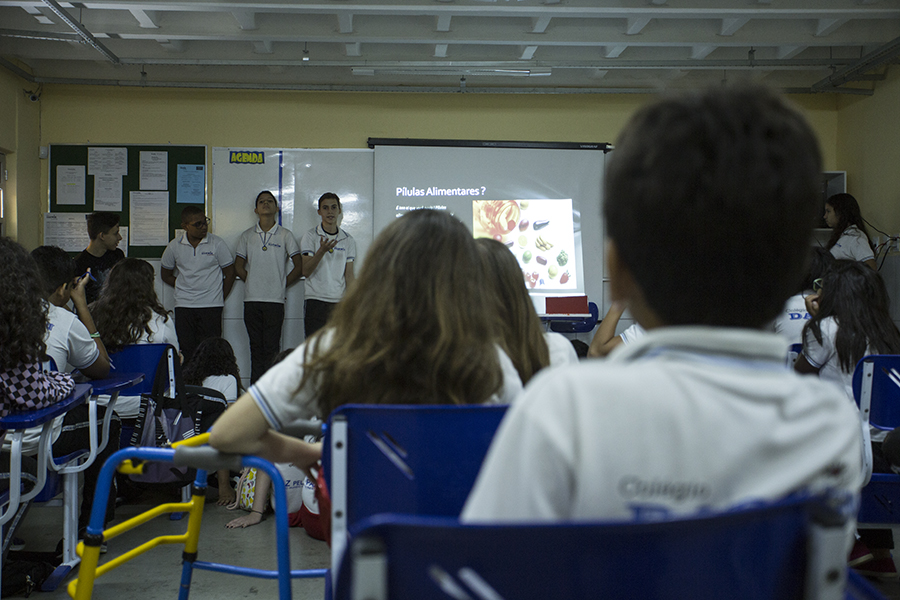
The solutions were created in several ways, totally different from each other.
There were a diversity of artifacts envisioned ranging from personalized medicine, genetic editing, brain-interface techies, renewable energy, 3D printing, virtual reality, IoT, nanotech, etc.
The Artifacts of the Future
There was everything: exploration of new water sources, generation of sustainable energy, solutions for basic sanitation (water), …
Transgenic foods (GMA), vertical farm, nutrition through DNA, meats produced in bioreactors (feed) …
Treatments for mental illness, personalized medicine, automated hospitals. Nanorobots, 3D organ printing, biohacking, genetic engineering (health), etc.
Immersive classrooms, learning via neurotransmitters, unschooling, personalized learning, watson in education, gamification, teachers avatars …
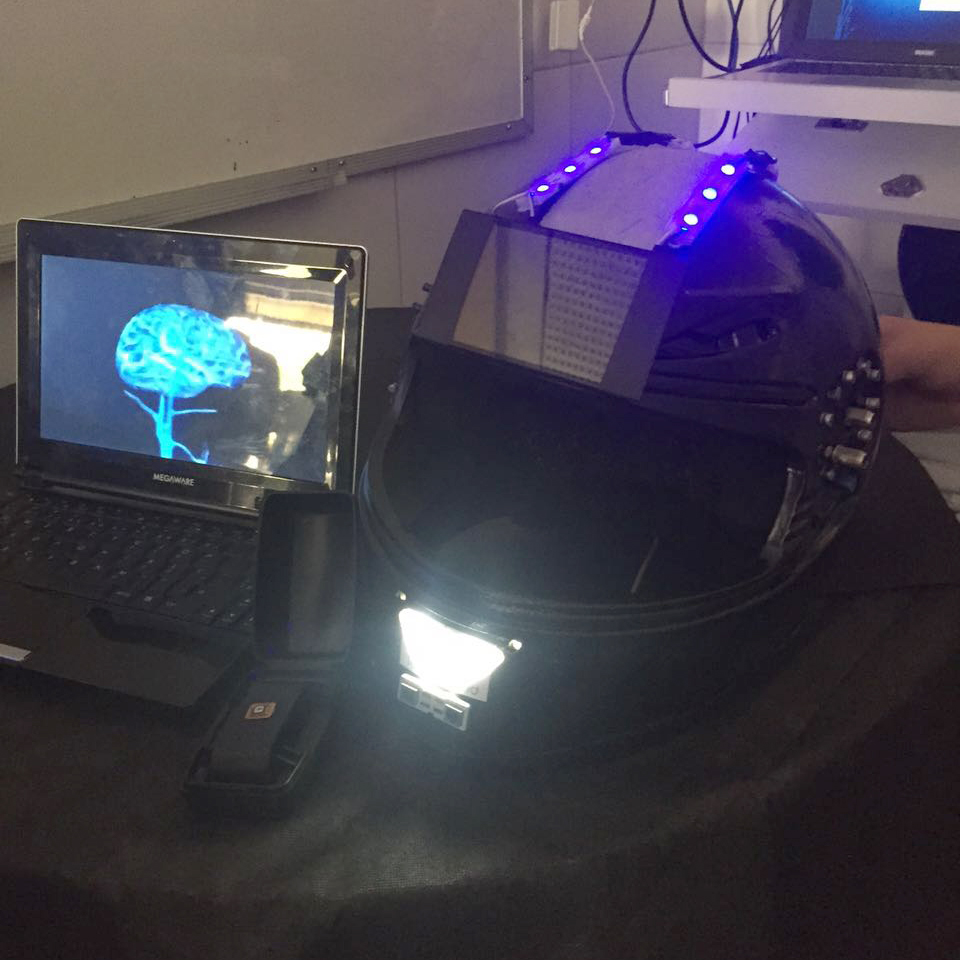
Future of relations, ethics, social structures, family, feminine empowerment, transhumanism, self-knowledge and spirituality, blockchain, new forms of government, etc …
Presentation in the form of a newspaper about Female Empowerment and a chip that could broaden people’s awareness, reducing male chauvinism …
A staging of an unemployment situation because of the massive automation in the future …
A play that presents a subject to teach empathy on gender diversity, and a simulation how it going to work out in the future.
Food re-education game with the aim of making people aware of what they eat …
An experiment with black light and holograms to talk about an empathic AI …
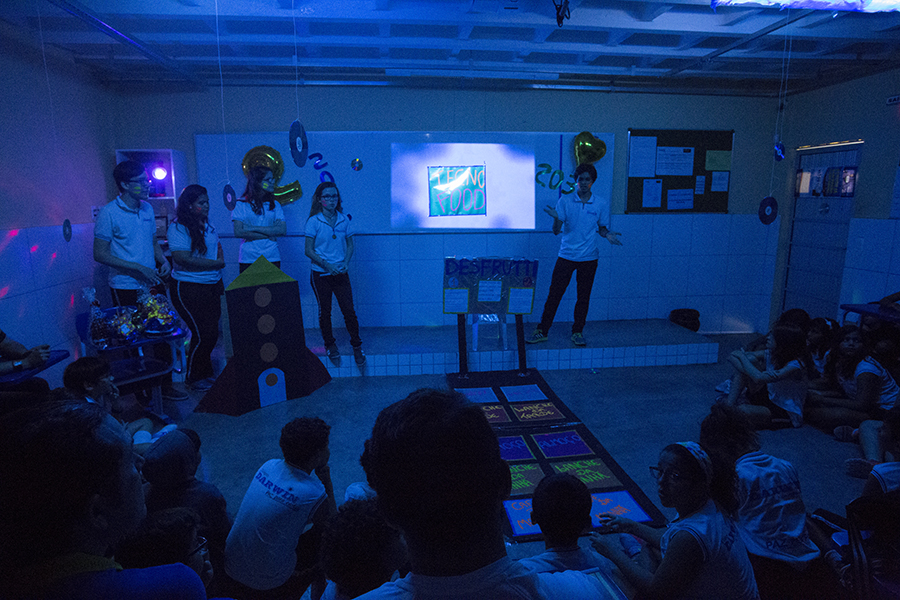
In addition to various models of 3D printer, neurotransmitters, nanorobots, vertical farm, AI for learning, among others.
What most caught attention beyond the artifact itself was the well-grounded presentation of the crews.
We had a lot of discussions from the free will of the human being, learning through neural stimulation, 3D food safety, affective AI and robotics, external “HD” to the brain that could help fight Alzheimer’s, nanobots in curing diseases, The transhumanist culture etc.
The most part of artifacts were awesome, and we’re going to list some of them here: (The description below was made by the artifacts creators)
1- Techno Mind
A helmet would make an “x-ray” of the brain, showing the parts with damaged connections through the system on the computer. It would also be a place to learning much faster, picking up information and sending it to the brain and delivering binaural audios.
The device would be powered through the system on the computer to repair damaged brain connections by sending signals to the cells, signals that would be transported through electrical impulses to the damaged region. The device would also be responsible for periodically sending doses of a concentrated compound of stimulant substances from the cognitive system.
This project could be the solution to problems such as psychopathy, which has as main characteristics the fact that the individual can not empathize and be deprived of guilt, remorse, sensitivity and a sense of ethical responsibility.
The device would also have the function of inhibiting the release of dopamine in the brain, since it is the substance linked to addiction, which may help in the treatment of drug use.
The most impressive aspect about this artifact, both the concept and design was made by 13 and 14 year-old kids.
2- Coin 36
A short series films to make humanity aware of its attitudes, depicting a dystopian future. (Concept inspired by the Black Mirror)
Episode 1 – Water Rush
Episode 1 was aimed at emphasizing for the viewer the consequences of water scarcity, a reality that already inhabits the world.
Episode 2 – The Max Vaccine
Episode 2 takes a deeper approach, talking about the consequences of immortality, and the extent to which being immortal can change our thinking. “If we stop to think, if life is eternal, a whole philosophical, religious and social line falls to the ground.”
Episode 3 – FoxTrot
In episode 3, it was demonstrated in a simple and metaphorical form the alienation, the society of consumption, the politics of the masses and the concept of State and Anarchy.
The purpose of this episode was to make the viewer aware of his attitudes towards the society in which he lives, and to awaken him from this trance, from this alienation.
3 – New Phoenix
New Phoenix aims to make people aware by trying to make them understand that if we change our attitudes we can prevent many problems from happening in the future. Topics such as Family, Ethics and Morals, Humanism vs. Technology, Social Issues, Transhumanism, Human Behavior, Blockchain, etc.
They have shown that the technology of the future can help. It can be an ally of family, nature, and even government. New Phoenix has shown that the future is closer than we think, and that it may be a good thing, but it depends on your attitude today.
4 – Skynet
Skynet had the purpose of simply developing Artificial Intelligence, but not a simple AI, but rather something superior to us, a project, to create an intelligence with its own way of thinking, an intelligence with cumulative learning, and a high index development, enhancement, and creation of other technologies. Just remembering this artifact has shown how this AI will work through a hologram experience, built by a 15 year-old kid.
5- The Futurists
A chip capable of analyzing, correcting and restoring our brain in a fraction of a second. It can restore motor coordination, paralysis, reasoning, vision. In addition to providing more autonomy and control in the processing of our day to day decisions.
6- Futuristic Educators
An artificial intelligence that is able to know what the students did not learn in class and tells why. Teachers can know where the students’ difficulty lies.
7- Sky Water
The idea was a ship that has in its wings photovoltaic plates that absorb solar heat and converts it into energy. The ship also has exhaust fans that suck up the humidity of the clouds by accelerating the hydrological cycle, solving the problem of drought and the imbalance of global water inequality .
All these artifacts do not yet have real technological functionality, because the idea was only to represent how a solution would works in the real world. However, some are very interesting prototypes that with good guidance and technological input could come true.
What really call our attention was the kid’s vision of the future, beyond any technological growth the human aspect was amazing in every artifact, taking the audience to imagine which challenges and discussions will arise in the future.
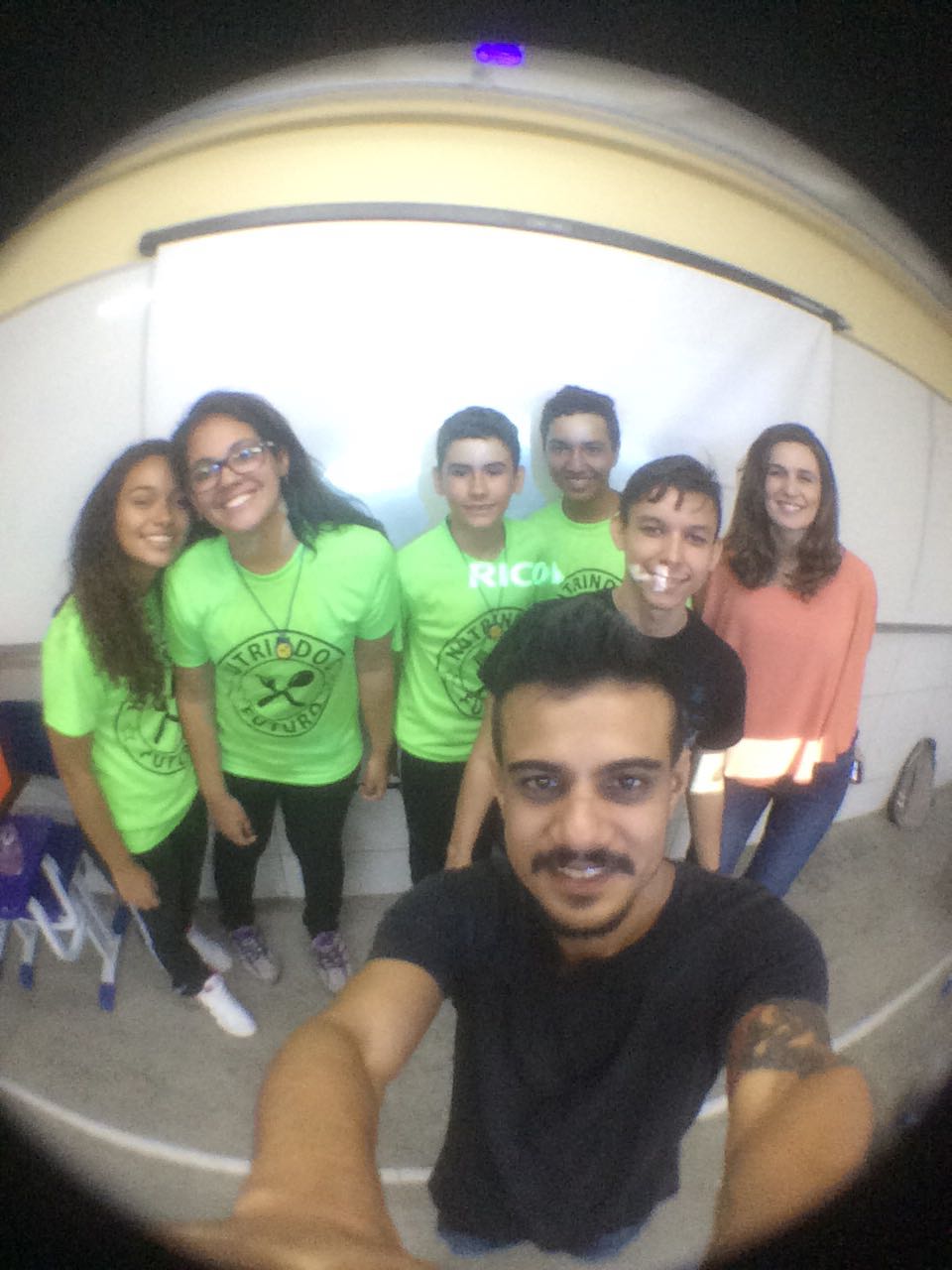
The aftermath of the experience
The main goal of FEX creators was offer a “safe place” to kids can freely imagine and build their own desired futures. Some months later, we’ve noticed some of the kids who were part of this crew are pushing the boundaries of school walls and developing their projects.
The notable one was the partnership between two teams, one who developed a hologram experience and other one who created the short series film. They joined forces and are setting up a business on holographic experiences to tell stories in events to other kids.
Next Steps of FEX
The FEX co-founders, Bruno e Renan, are focusing on design more experiential futures where people can emerge to create their own stories about the future.
The next experience already had a date to happen in Sao Paulo, the Fexco, a future immersive experience to adults where they expect to bring future thinking tools (signaling, scenarios, design fiction, sci fi prototyping, artifacts, etc) into a broad audience.
“We really believe the future is a place where everything can be created, and only with a diversity of tomorrow visions we can make the future more open and distributed. ” – Bruno – co-founder of fex
FEX has pocket experiences and more custom ones with the same goal of emerge people in the future scenarios and empower them with the necessary toolkit to design better futures. All of their experiences are focusing on social impact and question reality in some way.
If you want to know more about FEX recent works you can be part of FEX community on Facebook.
To read this text in Portuguese, click here.
